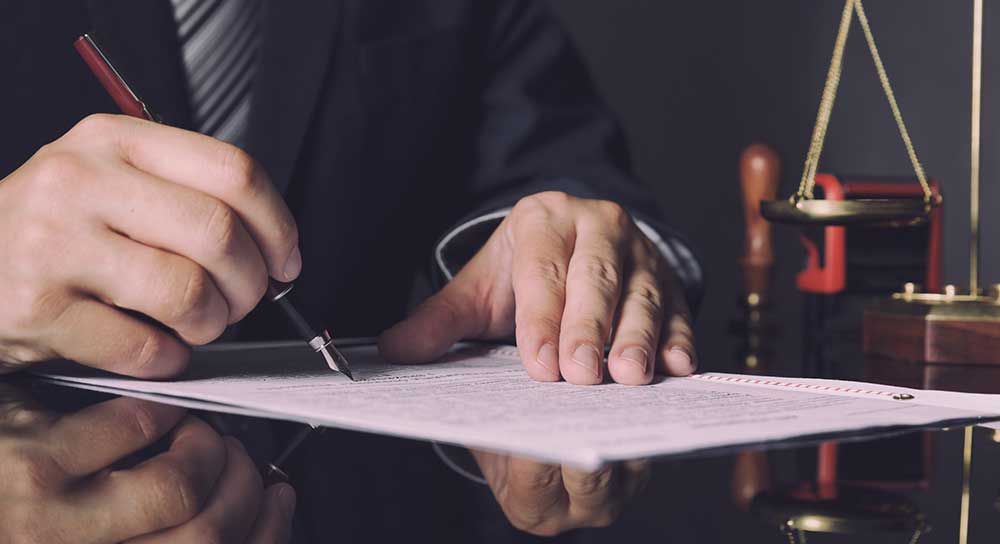According to the latest statistics from the Malaysian Department of Insolvency (MDI), Malaysia’s bankruptcy cases have risen in recent years. The latest number recorded by MDI shows that a total of 34,043 individuals were declared bankrupt from the year 2019 until April 2023. This indicates a concerning trend of financial distress among Malaysians and highlights the importance of understanding the process of declaring personal bankruptcy and seeking appropriate legal advice.
The law that governs bankruptcy in Malaysia is the Insolvency Act 1967 (the Act). It outlines the rights and obligations of both debtors and creditors and the procedures and requirements for filing for bankruptcy.
Common Reasons People Go Bankrupt
Common reasons cited for bankruptcy in Malaysia can vary. Still, some of the most common factors include excessive debt, job loss or unemployment, medical expenses, divorce or separation and business failure.
Excessive debt is a significant reason why individuals declare bankruptcy. This can occur due to overspending, living beyond one’s means, or taking on too much credit without the ability to repay it. When debt becomes overwhelming, and individuals cannot meet their financial obligations, bankruptcy is a way to eliminate or restructure the debt and start fresh.
When is someone considered bankrupt?
According to Section 5 of the Act, a person will be declared bankrupt by the High Court if they have a debt of at least RM100,000.00 and have failed to make payment for such debt within six months of receiving a bankruptcy notice.
Bankruptcy process in Malaysia
The process of declaring personal bankruptcy in Malaysia involves several steps. It begins with filing a bankruptcy petition by the debtor or their creditors.
(1) Creditor’s petition
In the context of personal bankruptcy in Malaysia, a creditor’s petition is a formal application made by a creditor to the court seeking an order to declare the debtor bankrupt after meeting the bankruptcy threshold.
This petition is typically filed when the debtor has failed to repay their debts despite receiving a statutory demand for payment. A creditor’s petition aims to recover the outstanding debt by forcing the debtor into bankruptcy proceedings.
Being served with a creditor’s petition can have severe consequences for the debtor. It marks the start of bankruptcy proceedings and affects their creditworthiness and financial reputation.
If the court finds the creditor’s petition valid, it will issue a bankruptcy order against the debtor. This order declares the debtor bankrupt and transfers the control of their assets and financial affairs to MDI.
(2) Debtor’s petition
A debtor may declare their inability to repay creditors by filing their own debtor’s petition for bankruptcy under Section 7 of the Act. A debtor’s petition cannot be withdrawn once filed without the court’s permission.
The petition needs to be filed at the court of the State in which the debtor resides. Before filing the debtor’s petition, the debtor must deposit a sum of RM1,500 with the MDI to cover the costs of administering their bankruptcy.
The court will not accept the petition for filing unless the receipt for the deposit is produced. A sealed copy of the debtor’s petition must then be served to the MDI by post or personal service. On hearing the debtor’s petition, the Court will make a Receiving Order and an Adjudication Order (AORO). This order not only declares the individual bankrupt but also authorises the MDI as the liquidator to take control of the debtor’s assets and financial affairs. However, the petition may be dismissed if the debtor is absent at the hearing.
What happens if you become bankrupt?
Several significant consequences and procedures follow when you have been declared bankrupt in Malaysia.
Seizure and sale
Firstly, your assets will be seized and sold to repay your debts. This includes properties, vehicles, investments and any valuable possessions. The proceeds from the sale will be distributed among your creditors according to the priority set by the law.
The MDI has the power to sell your property, but Section 48 lists certain exceptions to this:
- You can keep items you need for family and daily life, like bedding and clothes, but only up to a value of RM5,000. (Tools of your trade can’t be seized but are included in this RM5,000 limit).
- The MDI is not allowed to sell property you hold in trust for another person.
Once your assets have been sold and the proceeds distributed amongst your creditors, they can take no further action against you.
There are two types of creditors:
- Secured creditors – Those you gave collateral to, such as a bank. Any property used to secure a loan, such as a house or car, can be seized by the bank and sold to repay your debt. The MDI will get any remaining money left over.
- Unsecured creditors: These are the other creditors you owe money to without collateral.
Credit score
Secondly, being declared bankrupt will significantly impact your credit rating and financial reputation. Your name will be listed in the public bankruptcy register, which anyone can assess. The search may be conducted through the e-insolvency Portal at https://e-insolvensi.mdi.gov.my. A fee of RM10.00 will be charged for every search.
This listing will remain for a period, usually five years, or until you have fully settled your debts. Obtaining credit, such as loans or credit cards, will be challenging as most financial institutions are reluctant to lend to bankrupt individuals.
What other restrictions/disqualifications are there for bankrupt individuals?
Section 38 of the Act imposes certain restrictions on individuals declared bankrupt. These restrictions are designed to protect the interests of creditors and regulate the financial activities of bankrupt individuals. The main restrictions under Section 38 include the following:
- A bankrupt person cannot carry on any business without the permission of the MDI to prevent them from incurring further debts and potentially defrauding creditors.
- Bankrupt individuals cannot act as a company director or manage a company without the permission of the MDI, as it may pose a risk to the company’s financial affairs and the interests of its stakeholders.
- Restrictions to practice in some professions, including lawyer or accountant.
- A bankrupt can only have up to RM1,000 credit if they have a credit card.
- They can only hold one bank account for their monthly income, while all other accounts will be deactivated.
- Their passport must be surrendered to the MDI, and they’re prevented from travelling abroad without the DGI’s permission.
- They must report any money they receive over RM500 and submit a report of all income and expenses to the MDI every 6 months.
- DGI’s permission is required for them to begin any legal proceedings (apart from a damages claim for personal injury).
It is important to note that Section 38 restrictions are applicable during the bankruptcy period. Once the bankruptcy period ends, these restrictions are generally lifted, and the bankrupt can resume normal financial activities without seeking permission from the DGI.
Can you be declared bankrupt unknowingly?
In the past, you could have been made bankrupt without knowing it. Court papers could be served via substitute service (i.e. not delivered personally and instead left at your workplace, published in a newspaper or mailed).
However, since amendments were made to the law, the requirements for substitute service are stricter. This method can only be used if a creditor can demonstrate that the debtor has deliberately avoided or delayed from being served.
To avoid being bankrupt without knowing, individuals must stay informed about their financial situation, regularly review their credit reports, and promptly address any outstanding debts. By being proactive and vigilant, individuals can minimise the risk of being caught off guard by bankruptcy and take appropriate actions to manage their financial situation effectively.
On the verge of bankruptcy
Being declared bankrupt is not always inevitable. The new law in Malaysia allows you to negotiate through financial difficulties without becoming bankrupt.
To avoid bankruptcy, Section 2(c)(1) of the Act allows individuals to negotiate a voluntary arrangement with creditors to alter their repayment plans and restructure their debt.
A voluntary agreement in bankruptcy refers to a legal arrangement between a debtor and their creditors to repay the debts over a specified period, usually through an affordable and mutually acceptable repayment plan.
To initiate a voluntary agreement in bankruptcy, the debtor must first approach their creditors and express their intention to enter into such an agreement. Once the agreement is reached, it must be documented in a formal agreement known as a voluntary arrangement proposal. This proposal outlines the terms and conditions of the agreement and any other relevant provisions.
A voluntary agreement in bankruptcy does not absolve the debtor of their debts entirely. Instead, it provides a structured and manageable way for the debtor to repay their debts over time. The debtor must adhere to the terms of the agreement and make regular payments as agreed upon. Failure to comply with the terms of the voluntary agreement may result in the agreement being terminated, and the debtor may be subject to bankruptcy proceedings.
Can guarantors go bankrupt?
In the past, many Malaysians have gone bankrupt because they stood in as a guarantor. The recent legal amendments to the law have improved this situation, however.
The law makes a distinction between social guarantors and non-social guarantors.
A social guarantor is a person who offers a guarantee not for profitmaking purposes but for any of the following, namely:
- Education loan, scholarship, grant for research purposes,
- Hire-purchase transactions for personal or non-business use and
- Housing loan for personal dwelling.
Total Immunity – Before the act amendment, a bankruptcy action may be commenced against a social guarantor when the Court is satisfied that the creditor concerned has exhausted all means of recovering the sum owing. Under Section 5(3) of the amended act, this position is changed, where a social guarantor enjoys total immunity from any bankruptcy action.
In Malaysia, non-social guarantors can indeed be declared bankrupt. A non-social guarantor guarantees a loan or debt for another person or entity, such as a company. If a non-social guarantor cannot repay the debt and the creditor decides to pursue bankruptcy, they can file a bankruptcy petition with the Malaysian court.
The court will then assess the financial situation of the non-social guarantor and determine whether they should be declared bankrupt. Non-social guarantors must know their financial responsibilities and the potential consequences of guaranteeing a loan or debt.
How does bankruptcy affect current or future employment?
In the case of bankruptcy, the individual retains the right to remain employed in their current job or secure a new position. However, it must be noted that restrictions may exist in specific employment contracts or company documentation that may require the bankrupt individual to inform their employer of their financial condition.
For example, if the contract stipulates transparency regarding bankruptcy status, it becomes incumbent upon the individual to disclose this information to their employer. Such terms are contingent on the individual’s existing contractual agreements with their employer.
Conclusion
We have discussed the common reasons why individuals may fall into bankruptcy and clarified the point at which bankruptcy is legally declared. Though this text is relatively thorough, it doesn’t entirely encompass all facets of bankruptcy procedures. Nevertheless, it serves as a significant guide that illuminates the core stages involved, from filing a bankruptcy petition to receiving the court’s issuance of a bankruptcy order and what to expect throughout the process.
To conclude, bankruptcy refers to a process where a debtor will be declared bankrupt under a court order on the creditor’s or debtor’s petition. All the unsecured property belonging to the bankrupt will be vested and administered by the MDI, and the MDI has the responsibility to realise all such assets. The sale proceeds will be distributed among creditors who have filed their proof of debts and the debts have been admitted by the MDI.



